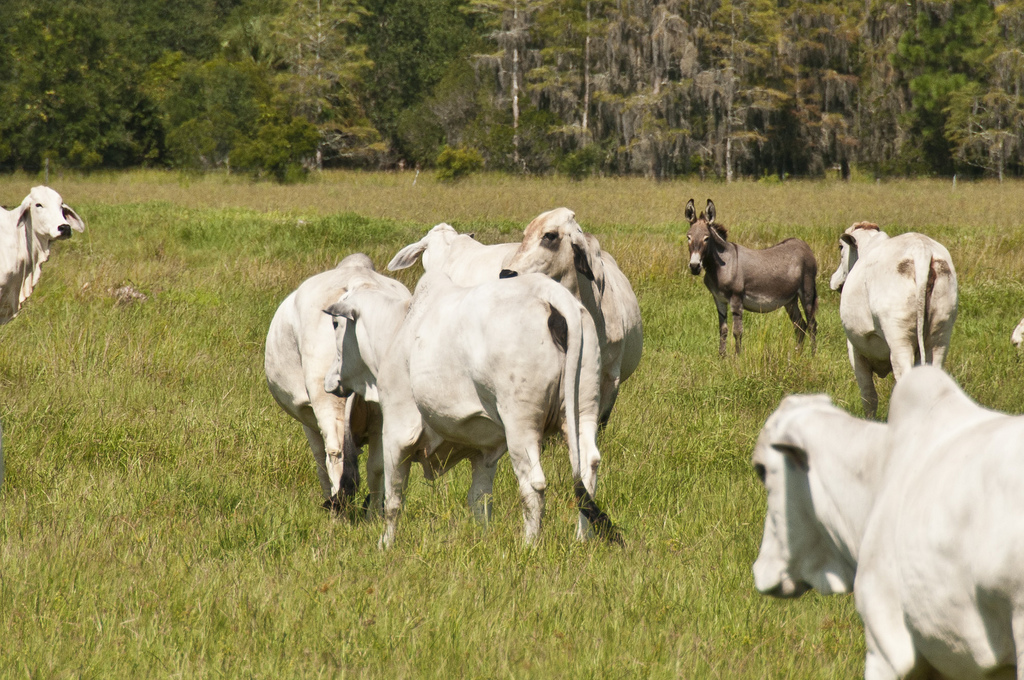Q&A with Industry Experts on the latest USDA Cattle Inventory Report
The USDA’s National Agriculture Statistics Service (NASS) released the Cattle Inventory Report on January 31; unable to release a mid-year report in 2013 due to government furloughs, the latest report confirmed the fact that the US’s—and Florida’s—Beef Cattle Herd is smaller than it has been since the early 1960s. Weighing in on the report—and the effects here in Florida—are Don Quincey, president of Quincey Cattle Co./ past Florida Cattlemen’s Association president; and Bridget Carlisle, UF/IFAS Polk County Extension livestock agent.
Central Florida Ag News (CFAN): The USDA Cattle Inventory shows low beef cattle numbers that haven’t been seen in a while. Why are the numbers so low?
Don Quincey: Nation-wide, heavy cattle states (like Texas, Nebraska, Kansas, and California) have been experiencing a severe drought, and many have had to liquidate their herds.
Bridget Carlisle: A major contributor to the decrease in inventory is weather conditions, particularly the drought and short forage supply in the southeast.
CFAN: Florida’s total herd decreased by two percent. Are there unique reasons behind Florida’s decreases?
Quincey: In Florida, the rising cost of land is a major factor that has contributed to the smaller herd. If you go back to 2005 through 2008 or so, many ranchers thought they’d do something else with the property because land was so expensive. Many Florida ranchers liquidated their stock, which has led to a smaller herd today.
Carlisle: Florida did not experience as much of a downfall in forage supplies due to the weather as other parts of the southeast. However, the shortage of feeder cattle drove prices up, making the decision to sell rather than retain calves much more desirable in Florida.
CFAN: What do the lower numbers mean for the Florida cattle industry?
Quincey: Florida is primarily a cow-calf state, and calf prices are really high at the moment. Those ranchers who are calf producers will benefit greatly in the coming years. For the state as a whole, ranchers will be focusing on increasing the herd; they will be retaining heifers to grow their herds as it’s much more cost effective to raise a heifer than to buy one.
Carlisle: Many Florida producers are responding to the market by expanding their herds or selling heifers as replacements, rather than feeders, as female prices have experienced a rise. Producers are looking at ways to expand their herds while taking advantage of good market prices. As long as weather conditions are good for forage production and the market remains favorable, Florida beef cattle producers will look to expand.
CFAN: Will the cattle industry get back to the high levels of the late 1990s?
Quincey: We won’t ever see those high numbers again, but Florida needs to be back in the 32 to 35 million head range to have a healthy herd.
Carlisle: Land availability has forced agriculture producers to produce more on less land. U.S. farmers and ranchers have adopted technologies and management practices that improve efficiency, but urban pressure, government regulation, and increased input costs have, and will continue to be, a challenge. These challenges will only compound as the global population grows and becomes more dependent on the western hemisphere (particularly the U.S.) to feed the world.
[/emember_protected]

